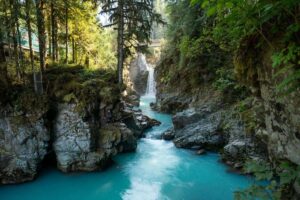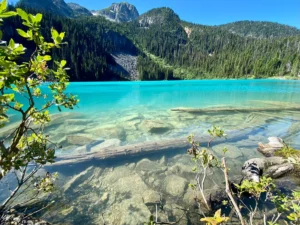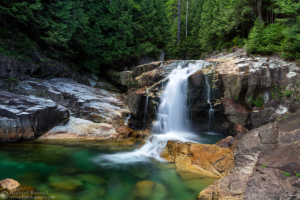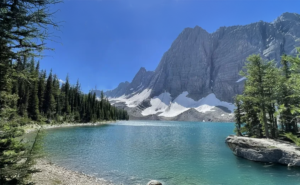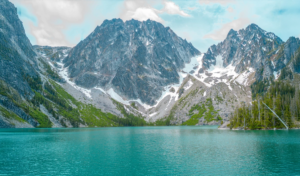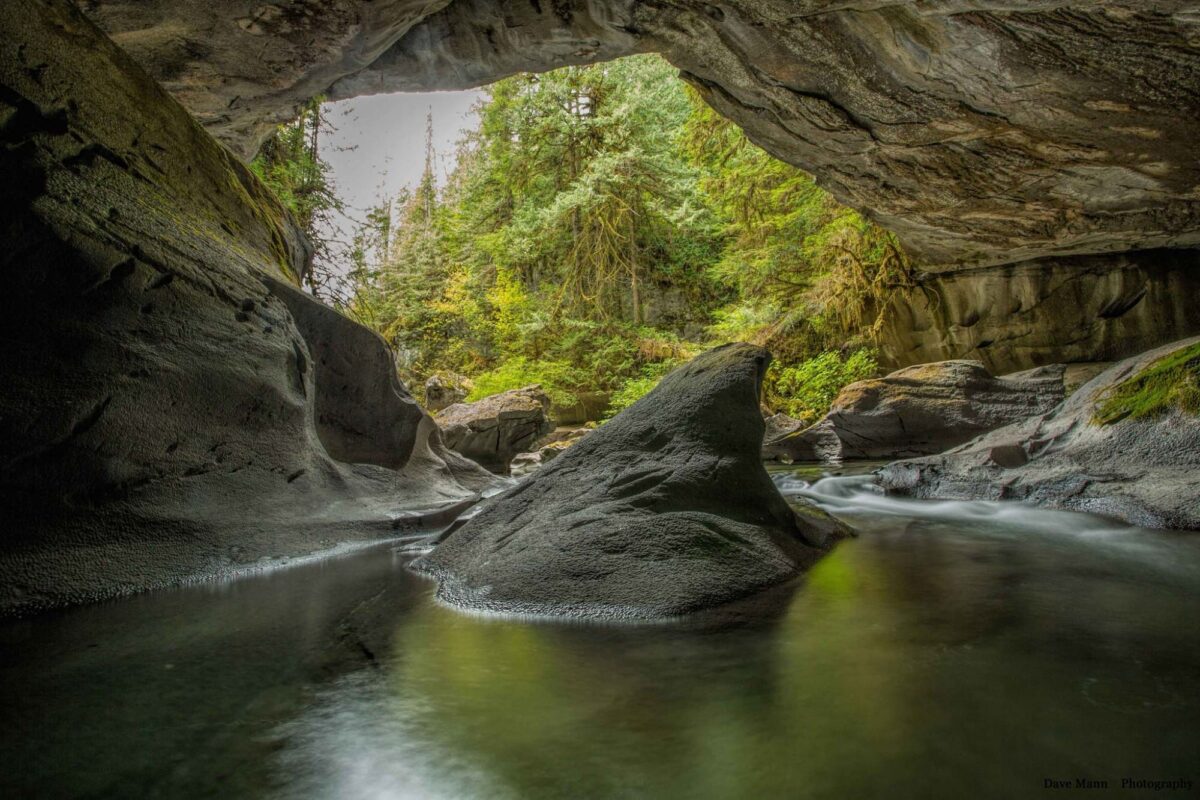
Little Huson Caves Regional Park is an extraordinary hidden gem located in northern Vancouver Island, British Columbia. Famous for its unique limestone rock formations and mesmerizing caves, the park offers visitors the chance to explore the underground beauty of nature, including stunning karst formations, natural bridges, and waterfalls. For adventurous travelers, this park offers a one-of-a-kind, off-the-beaten-path experience.
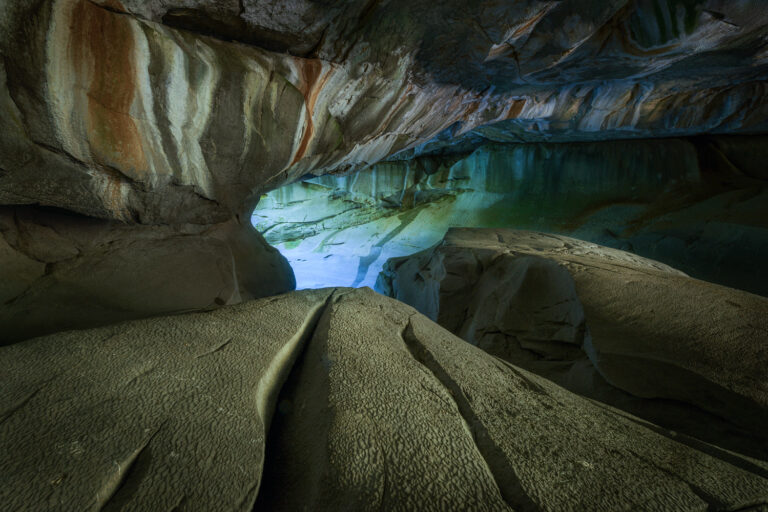
Location
Little Huson Caves Regional Park is situated in the Nimpkish Valley of northern Vancouver Island, approximately 200 km (124 miles) northwest of Nanaimo. The park is a perfect destination for anyone exploring the remote and scenic parts of Vancouver Island.
- Coordinates: 50.2339° N, 126.8778° W
Getting There
Little Huson Caves is somewhat remote, requiring a drive along both paved and gravel roads, but the journey is well worth it for the rewarding scenery.
- Driving: From Nanaimo, take Highway 19 north toward Port McNeill. After about 200 km, turn onto Zeballos Road (near the community of Woss). Follow this gravel road for about 20 km until you reach the well-marked parking lot for the caves.
- Parking: Free parking is available at the trailhead near the entrance to the park.
Main Attractions
The highlight of Little Huson Caves Regional Park is the incredible karst landscape, featuring a network of caves, natural rock bridges, and limestone formations shaped by centuries of water erosion.
- Caves: Little Huson Caves are primarily limestone karst caves, where water has carved intricate formations and caverns. Visitors can explore the caves on foot, but flashlights or headlamps are essential for venturing inside.
- Main Cave: The most accessible cave features a wide entrance and a fascinating interior with smooth rock walls and small waterfalls formed by underground streams.
- Arch Cave: Another notable formation is a large natural rock arch that stretches over a river, offering a spectacular photo opportunity and a glimpse into the power of water erosion.
- Waterfalls and Pools: Underground streams and waterfalls flow through some of the caves, creating enchanting pools of clear water. The sound of the water adds to the tranquil and mystical atmosphere inside the caves.
- Karst Formations: The limestone karst landscape is a geological marvel, with its dramatic formations of eroded rock, natural bridges, and underground rivers making it a geologist’s paradise.

Elevation
The elevation at Little Huson Caves Regional Park is relatively low, around 150 meters (492 feet) above sea level. The park is easy to access, with no significant elevation changes throughout the trails and cave explorations.
Difficulty Level
The park offers relatively easy hiking and cave exploration, though some areas of the caves can be slippery or uneven. There are no marked or challenging hikes, making the area accessible to most visitors.
- Trail difficulty: Easy. The park features well-marked trails and boardwalks leading to the cave entrances.
- Cave exploration difficulty: Moderate. The caves are easy to explore, but some areas can be dark, narrow, and slippery, so caution is needed. Visitors should be comfortable with uneven ground and limited light.
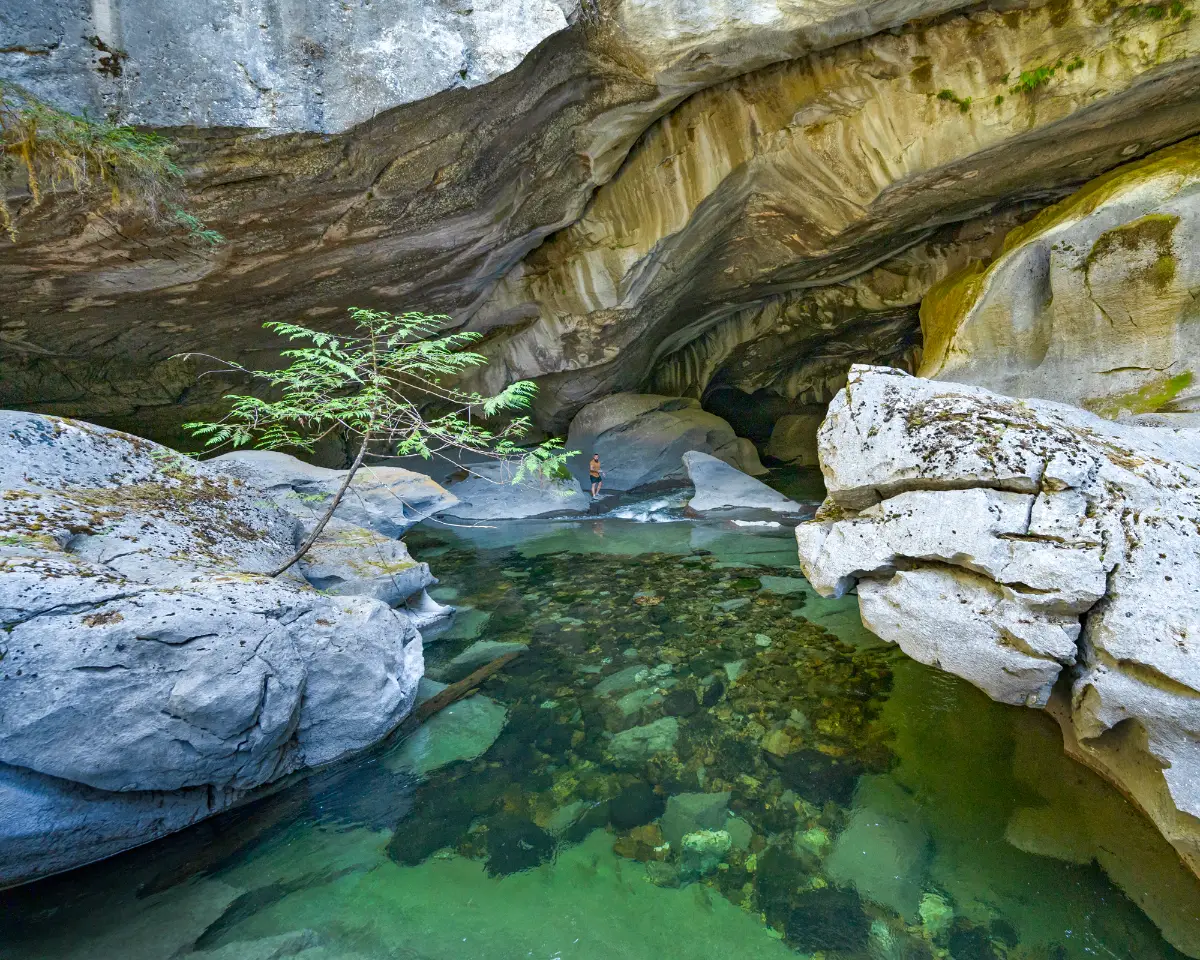
Gear to Bring
- Flashlight or headlamp: The caves are dark, and having a reliable light source is essential for safe exploration.
- Hiking boots: The trail to the caves is relatively easy, but sturdy, waterproof shoes are recommended due to the damp and slippery cave floors.
- Warm clothing: The temperature inside the caves can be much cooler than outside, so bring a light jacket or sweater.
- Camera: The unique cave formations, waterfalls, and natural bridges provide excellent photo opportunities.
- Water and snacks: There are no facilities in the park, so it’s best to bring your own provisions.
Best Time to Visit
Little Huson Caves Regional Park is open year-round, but the best time to visit is during the spring, summer, and early fall when the weather is more favorable for outdoor exploration.
- Best season: May to September. During this period, the weather is warmer, and the caves are easier to access. Spring is ideal for seeing the underground waterfalls at their fullest flow.
- Weather: Summer temperatures on Vancouver Island are mild, usually ranging from 15°C to 25°C (59°F to 77°F). In winter, the area is cooler, with occasional snow and rain, which can make the cave floors slippery.
Associated Costs
There is no entry fee to visit Little Huson Caves Regional Park, and parking is free, making it an accessible and affordable adventure for visitors.
- Parking: Free.
- Entry Fee: None.
Challenges and Cautions
- Slippery surfaces: The floors of the caves can be wet and slippery, especially near waterfalls or pools, so take extra care when exploring inside.
- Low light: The caves are dark, and flashlights are necessary for safety and visibility.
- Remote location: The park is located in a remote area with limited cell phone service, so plan ahead for navigation and emergencies.
Final Thoughts
Little Huson Caves Regional Park is a hidden treasure for those seeking an off-the-beaten-path adventure in Vancouver Island’s wild and remote northern region. Its unique karst landscape and mysterious caves offer a rare glimpse into the natural forces that have shaped the land over centuries. Whether you’re a geology enthusiast, an adventurer, or a photographer, this park offers an unforgettable experience that will leave you in awe of nature’s power and beauty.
Make sure to bring the right gear, prepare for remote conditions, and enjoy one of Vancouver Island’s most extraordinary hidden gems!


